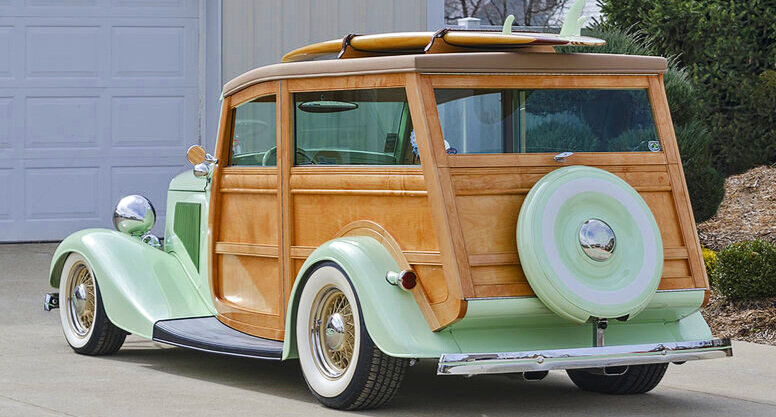(marketplace.org 3-23-18)
Back in the 1960s, the FBI starts hearing about a song with filthy lyrics. Lyrics so dirty that they launch an 18-month investigation to prove how obscene that song really is.
Three nights and days I sailed the sea
Me think of girl constantly
On the ship, I dream she there
I smell the rose in her hair
Louie Louie, oh no, me gotta go, yeah, yeah, yeah, yeah, yeah, baby
Yes, that song is the Kingsmen’s cover of “Louie Louie,” and the reason people initially thought the song was obscene was because the lyrics were so incoherent that they didn’t actually know what the singers were saying.
“[J. Edgar Hoover] has got all these FBI agents listening to ‘Louie Louie’ at different speeds trying to hear these supposed dirty lyrics,” said David Weinberg, a producer with KCRW. “They send a couple of agents to follow the Kingsmen on their tour and watch them play the song. The crazy thing is that ultimately, the FBI conclusion is that they don’t even know what they’re saying. They’re like, ‘we just can’t figure it out.’”
The new KCRW anthology “Lost Notes” chronicles music stories throughout history and features an episode on “Louie Louie’s” strange journey. Weinberg, who helped produce the episode, joined us to teach us about the song’s trajectory.
-The origins of Louie Louie-
That version from the Kingsmen — a ’60s beat/garage-rock band from Portland, Oregon — sold millions and millions of copies. But it’s actually a cover of a song written by an African-American singer and songwriter named Richard Berry.
Berry in turn based “Louie Louie” on a Latin song called “El Loco Cha Cha” that he heard while he was backstage at a show.
His version was a regional hit, performing well on the West Coast before eventually dying out. Later, he sold the rights to a handful of his songs — including “Louie Louie” — to Flip Records Label for $750 so that he could afford an engagement ring for his future wife, and fellow singer, Dorothy Adams.
Today, that’s equivalent to about $6,280.
-The cover is, objectively, terribly produced-
The strange thing about the Kingsmen’s version is that it’s a bad recording.
“Like, famously bad,” Weinberg said. “They’re teenagers. They didn’t know what they were doing. The lead singer was singing into the wrong part of the microphone. He had braces. He comes in too early on a verse.”
At one point, the drummer drops his drumsticks and yells an F-bomb in the middle of the song.
While you’d expect them to start over, the record producer running the session was a “cheapskate,” Weinberg said, and decided that they should just move on to the next song.
Yep, the Kingsmen’s version of “Louie Louie” was recorded in one take.
“It may be one of the only hit songs to get played continuously with an F-bomb in it that I’m aware of,” Weinberg added.
There are multiple covers of the song, and based on the quality of those recordings, Weinberg said he would place the Kingsmen’s version at the very bottom of that list.
But it turns out that terribleness was a feature, not a bug.
-How the FBI gets involved-
A radio DJ in Boston named Arnie Ginsburg hosted a segment called “Worst Record of the Week.” He picked the Kingsmen’s version of “Louie Louie” for the segment, but people ended up loving it and the song became a nationwide hit.
“Because the lyrics are so unintelligible and you can’t understand what they’re saying — all these kids get it in their head that the lyrics are dirty, that they’re about sex, and so they write down what they think of the dirty lyrics,” Weinberg said.
Their parents find out about these lyrics and complain to elected officials. The complaints eventually make their way to the governor of Indiana.
He plays it at low speeds and claims that “his ears tingled because the lyrics were so filthy, and he bans it,” Weinberg said. “And you know when you ban something, it’s like the best advertising you can get.”
That’s when J. Edgar Hoover gets wind of it and tries to crack down with his FBI investigation.
-Continued success-
Since the Kingsmen’s cover, there have been several resurgences of the song in TV ads and movies.
“A lot of people, when you say ‘Louie Louie,’ they think of ‘Animal House,’ (1978) which came out years and years after it was a hit. And that sort of brought it back to life,” Weinberg said.
It’s become an easily recognizable song that got a lot of licensing deals and made a lot of money for a lot of people, according to Weinberg. “The Kingsmen made some money off it too, but they also were not getting rich off of ‘Louie Louie,'” he said.
“[Richard Berry] fought to get that [$750] and thought he had done really well. He just didn’t know what was about to happen to that song,” Weinberg added. “There’s no way he could have known that it would have gone on to become this massive hit and generate millions and millions of dollars.”
https://www.marketplace.org/2018/04/23/history-song-louie-louie/


